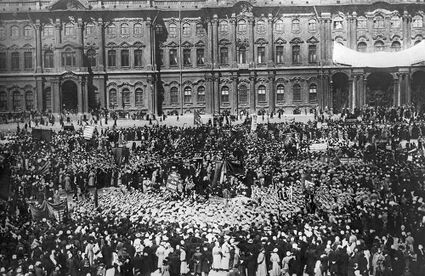1914 December Uprising
This article is incomplete because it is pending further input from participants, or it is a work-in-progress by one author. Please comment on this article's talk page to share your input, comments and questions. Note: To contribute to this article, you may need to seek help from the author(s) of this page. |
| 1914 December Uprising | |||||||
|---|---|---|---|---|---|---|---|
| Part of the Ruvelkan Revolution. | |||||||
 Supporters of the Imperial cause gather in Debrecen’s central square following the uprising. | |||||||
| |||||||
| Belligerents | |||||||
|
|
| ||||||
| Commanders and leaders | |||||||
|
|
| ||||||
| Strength | |||||||
|
10,000 Volunteer Guard 15,000 Civil Militia | 4,000 Red Volunteers | ||||||
| Casualties and losses | |||||||
| Several wounded soldiers. | All imprisoned or deserted. | ||||||
The 1914 December Uprising, commonly referred to as the Prohászka Uprising or the Imperial Revolt, was a revolution in Ruvelka led by the Imperial Separatist Movement of Rózsá Prohászka and Kátálin Dorman that is considered the official starting point of the historically pivotal Ruvelkan Civil War. An armed insurrection, taking place in the central Ruvelkan city of Debrecen, the December Uprising led to the establishment of the Imperial State that would eventually go on to create the Principality of Ruvelka.
It capitalized on the earlier November Revolution in Kaposvár which ended in violent clashes between protesters and government police forces resulting in several hundred deaths. The ongoing political turmoil prompted the Imperials to secure their control over central Ruvelka where their support was strongest, quickly organizing and recruiting a volunteer militia. Urban workers throughout the nation also began organizing and aligning with the the Imperials and other anti-communist movements.
The Imperials initiated the revolution with the occupation of several government buildings in Debrecen on 5 December. Several stand-offs took place between the Separatist Volunteer Guard and the soldiers of the Red Volunteer Garrison, but no shots were exchanged. After several days, severely outnumbered and cut-off from the government in Kaposvár, the Red Army forces in Debrecen were forced to surrender.